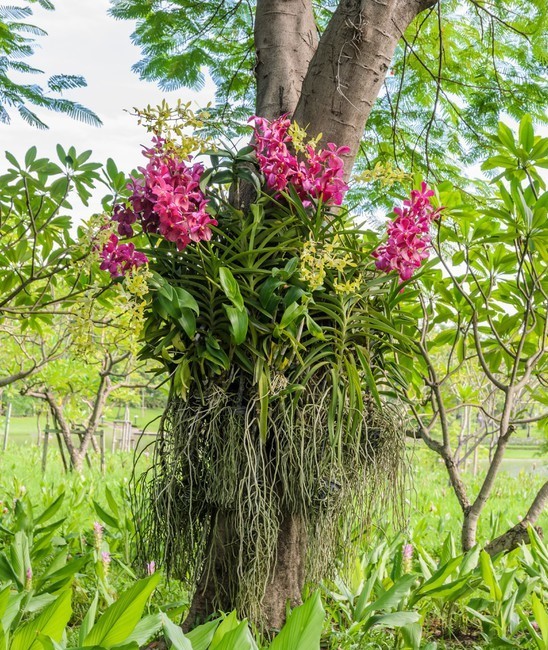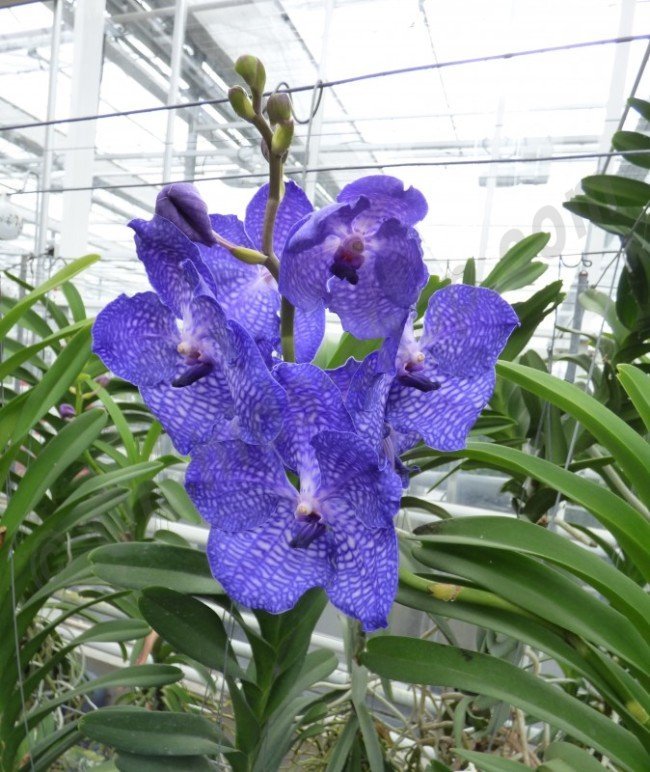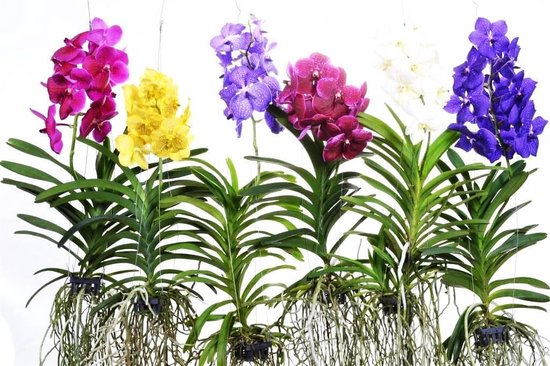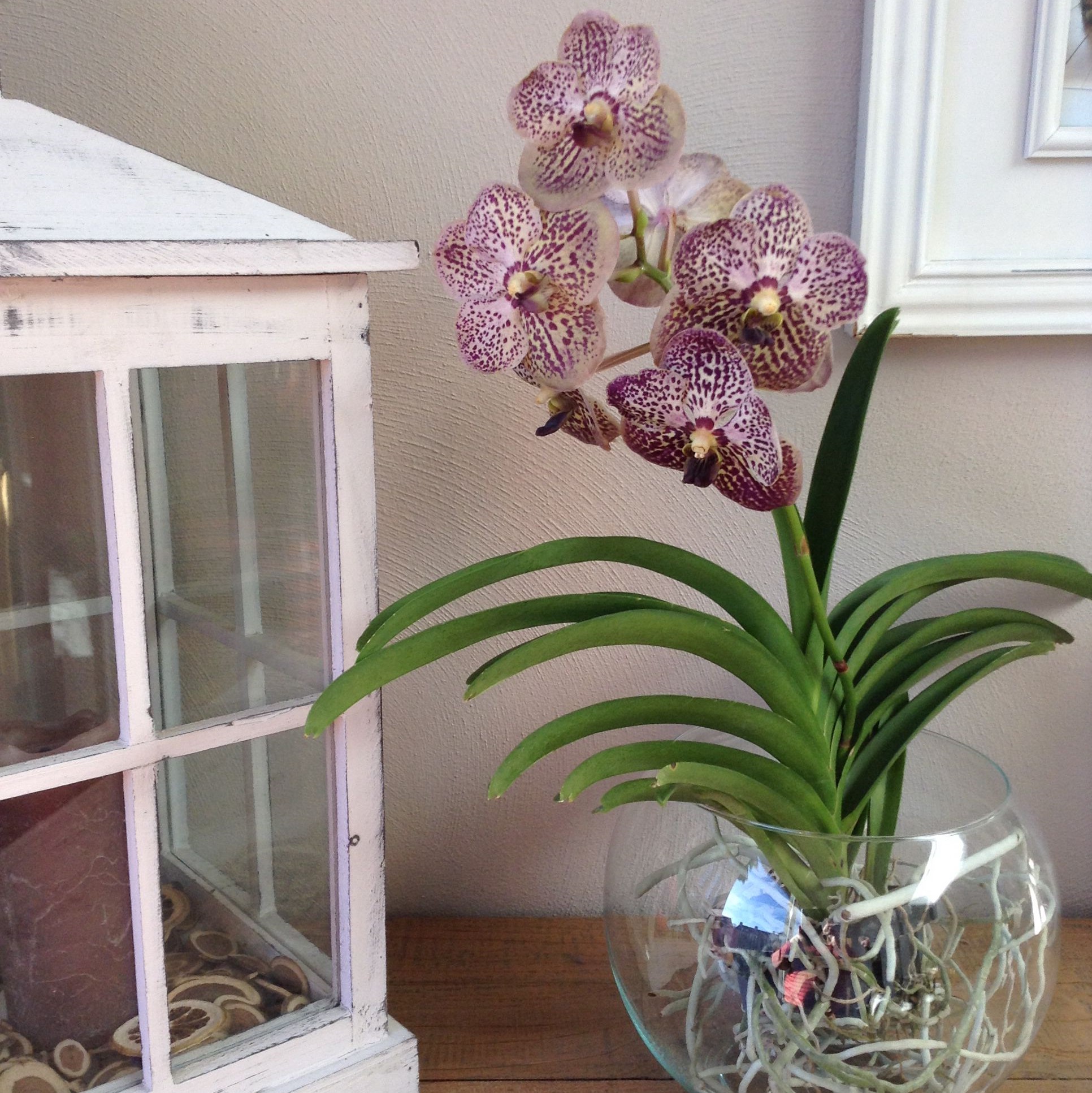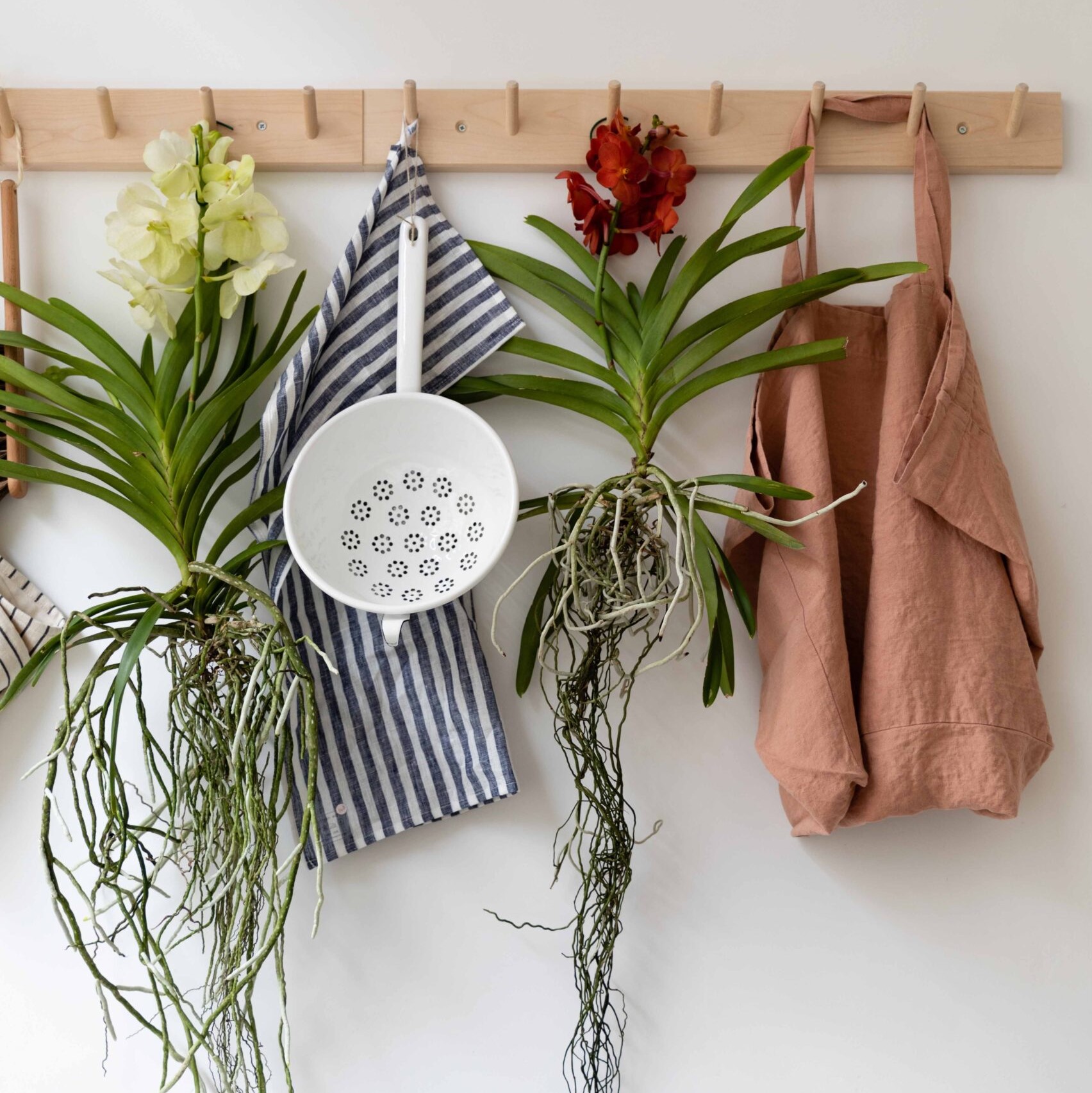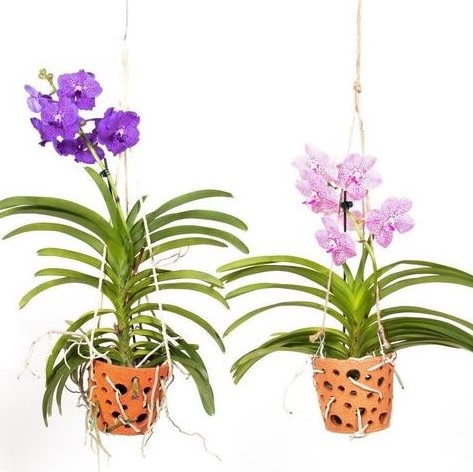- Ön itt van:
- Plant of the month: Orchidee Vanda

Vanda orchid
The orchid, the queen of the jungle, comes in many different species! The Vanda is one of the most exclusive orchid species. With its spectacular aerial roots, extravagant colours and opulent appearance the plant is a stylish addition to any interior. The growth habit of this plant is very special. We would love to tell you about that and more. We hope you enjoy our story!
An unusual growth habit
The Vanda is found growing wild in many places, from India and Sri Lanka to northern Australia. The Vanda has a unique growth habit that is not common in nature. This is because it does not grow in the soil, but on a tree. The aerial roots hang freely or wrap themselves around the tree. Because the roots act like a sponge, they can absorb all the water and nutrients that comes from morning dew and rain. So the Vanda does not need potting soil. In fact, the roots would rot in soil.
Ansu: the exclusive grower of the Vanda in Europe
The Vanda is grown exclusively by the Ansu nursery. This company's history is a great story. Decades ago, grower Steef Adrichem visited Thailand, where he saw the Vanda Blue Magic. He thought it was such a beautiful flower that he contacted Tamlong Suphachadiwong of Suphachadiwong Orchids, breeder of Vanda orchids. As a child, Tamlong helped his father grow orchids. Years later he came across a special type of orchid, the Vanda. He bought this Vanda and started his own business in Thailand to focus on breeding, selecting and exporting orchids, including the Vanda. When Steef and Tamlong met up, they decided to work together. Steef became the exclusive grower of the Vanda in Europe. The Vandas became such a success that together they developed and cultivated further varieties through breeding. Steef’s company was previously called ANCO. This was changed to ANSU in 2019. The first two letters refer to the former company name. SU references the first letters of Tamlong's orchid nursery Suphachadiwong Orchids. Their motto is 'Standing out Together', and they certainly do that by cultivating the beautiful Vandas.
Extravagant colours
The Vanda is the orchid with the most vibrant colour palette. The Vanda comes in all the colours of the rainbow. There is even a whole range of shades of blue, even though the colour blue is very rare in nature. The extravagant colours are designed to attract insects for pollination.
Vanda uses
The Vanda looks great in a vase, with its decorative roots clearly visible. The roots become attached to the glass at some point. The Vanda can also be hung from the ceiling without using a root ball or potting soil! Loose on a hook or suspended from a chandelier, the Vanda steals the show. We are also increasingly seeing the Vanda in a terracotta hanging pot with holes. The Vanda's roots have plenty of room to dangle through the holes. It also looks super cute!
How to care for the orchid
Place the plant in a bright spot where it is not in direct sunlight. The optimum temperature is 17 to 28 º C. This 'air plant' does not need much water. It is best to mist a hanging Vanda two or three times a day. If the Vanda is hanging in a dry room, it’s a good idea to place the plant in a bucket of water for half an hour twice a week. The roots will then suck themselves full with water. The air indoors can be drier in summer and winter. You should then spray the smallest buds so they don't dry out.
Tip: You can tell from the Vanda’s roots whether they have had enough water. Grey roots are dry and need water. When the roots have sucked up their fill of water, they turn green.
A Vanda in a vase needs watering once or twice a week. Fill the vase with water until the roots are submerged. It is thereby important to ensure that no water gets on the leaves. Empty the vase after 20 to 30 minutes. The roots are saturated when no more air bubbles appear.
 Nederlands
Nederlands  English
English  Français
Français  Deutsch
Deutsch  Español
Español  Româna
Româna  Polski
Polski  Slovensky
Slovensky  Slovenija
Slovenija  Italiano
Italiano  Svenska
Svenska  Magyar
Magyar  Latviešu
Latviešu  Suomi
Suomi  ελληνικά
ελληνικά  Ceština
Ceština  Hrvatski
Hrvatski 
